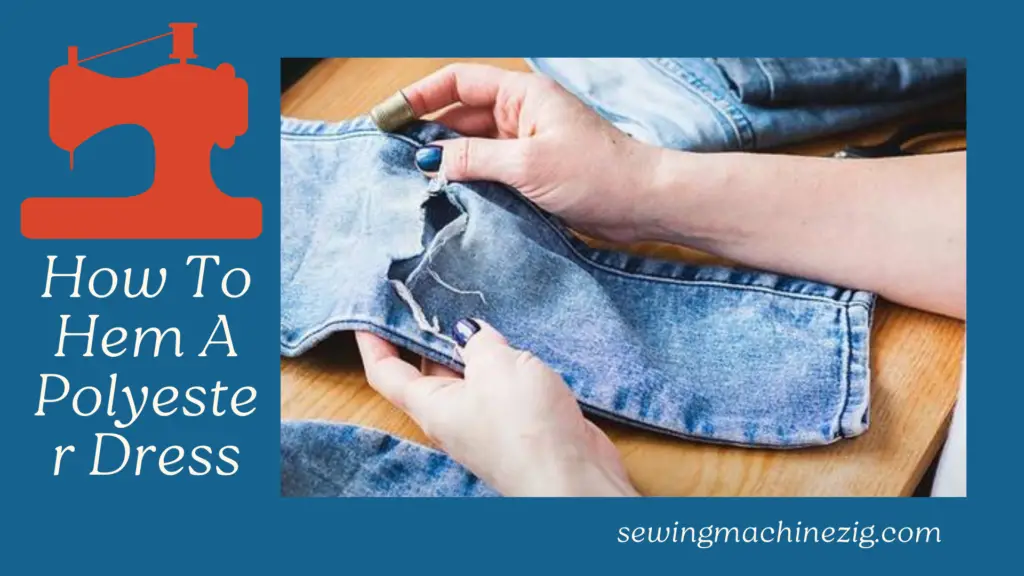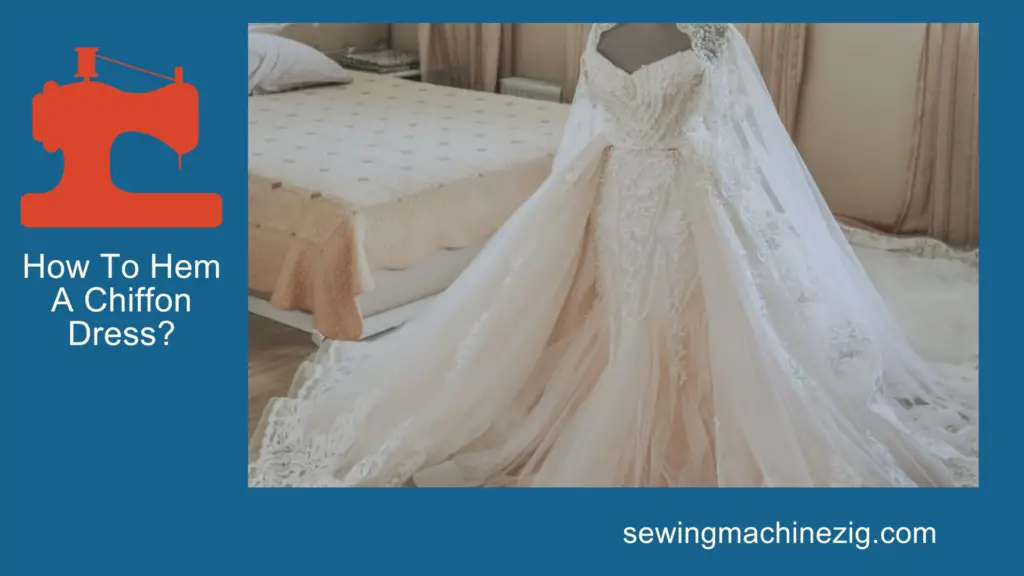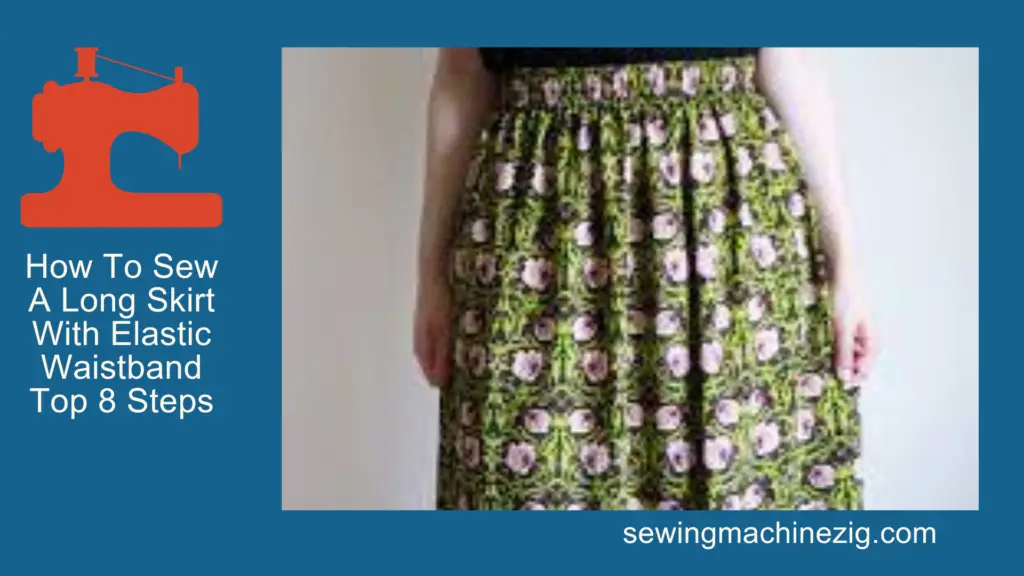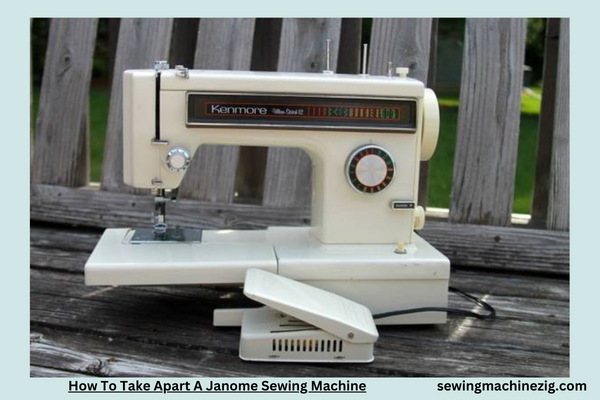
Delving into the inner workings of your Janome sewing machine can be a daunting yet empowering task. For those pondering the intricacies of machine maintenance, the question arises: “How to take apart a Janome sewing machine?” Unraveling the mysteries within is a crucial skill for enthusiasts seeking to troubleshoot, clean, or upgrade their machines.
In this comprehensive guide, we will demystify the process, providing step-by-step insights into disassembling your Janome sewing companion. Equip yourself with the knowledge to navigate the internal landscape, ensuring your sewing machine remains in optimal working condition.
How To Take Apart A Janome Sewing Machine Detailed Answer
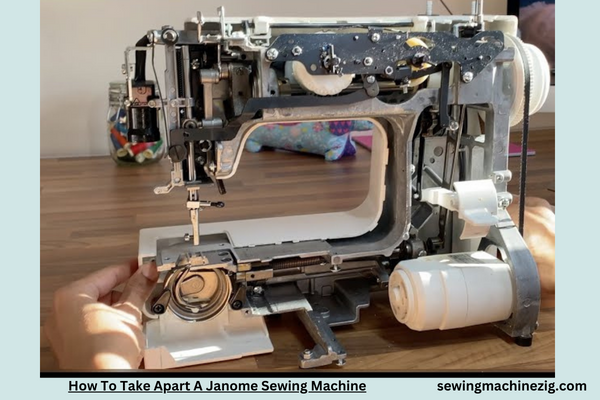
Disassembling a Janome sewing machine may seem like a daunting task, but with careful consideration and attention to detail, it can be a manageable process.
If you find yourself in a situation where you need to take apart your Janome sewing machine, follow this comprehensive step-by-step guide”How to take apart a Janome sewing machine?” for a smooth and successful disassembly.
Step 1: Gather Necessary Tools
Before you begin, ensure you have all the necessary tools on hand. This may include screwdrivers (both flathead and Phillips), tweezers, pliers, and a small container to store screws and small parts.
Step 2: Power Off and Unplug
Always prioritize safety. Power off your Janome sewing machine and unplug it from the electrical outlet. This prevents any accidental activation of the machine during disassembly.
Step 3: Remove the Needle and Presser Foot
Start by removing the needle and pressing foot. This step allows for easier access to various components. Use the appropriate tools to loosen and remove these parts, ensuring you keep track of any screws involved.
Step 4: Take Off the Bobbin and Bobbin Case
Remove the bobbin and then the bobbin case from the sewing machine. This step helps in exposing additional components that may need attention during the disassembly process.
Step 5: Remove the Accessory Tray
If your Janome sewing machine has an accessory tray, take it off. This is typically secured with screws, so use the appropriate screwdriver to loosen and remove them. Place the screws in your container for safekeeping.
Step 6: Unscrew the Faceplate
Locate and unscrew the faceplate of the sewing machine. This step allows you to access the inner mechanisms. Keep track of the screws and any other small parts associated with the faceplate.
Step 7: Disconnect the Feed Dog
Carefully disconnect the feed dog, which is responsible for moving the fabric through the machine. This may involve removing screws or levers, depending on your specific Janome model. Take note of the mechanism for reassembly.
Step 8: Loosen Screws on the Side and Back Panels
Most Janome sewing machines have side and back panels that are secured with screws. Loosen and remove these screws to gain access to the internal components. Keep all screws organized in your container.
Step 9: Separate the Top and Bottom Halves
Once all necessary screws are removed, carefully separate the top and bottom halves of the sewing machine. Pay close attention to any connectors or wires that may still be attached. Disconnect these carefully, noting their positions for reassembly.
Step 10: Take Photos for Reference
Before further disassembly, take photos of the internal components. This serves as a visual reference during the reassembly process, especially if you encounter any challenges or need to recall the original configuration.
Step 11: Disassemble Additional Components
Depending on your specific needs, you may need to disassemble additional components such as the tension assembly, motor, or electronic components. Take your time and document each step thoroughly.
Step 12: Store Parts Safely
As you disassemble the Janome sewing machine, store all parts, screws, and small components in a safe and organized manner. Using a small container with compartments can help prevent loss and confusion.
Step 13: Take Note of Wear and Tear
While disassembling, take note of any signs of wear and tear, such as frayed wires, damaged gears, or worn-out components. This information will be valuable when assessing the need for repairs or replacements.
Step 14: Reassembly
When the necessary maintenance or repairs are complete, reverse the disassembly steps for reassembly. Refer to the photos taken earlier and any notes you made during the process to ensure accurate reassembly.
Step 15: Test the Machine
After reassembly, test the Janome sewing machine to ensure everything is functioning correctly. Pay attention to the stitching quality, tension, and overall performance of the machine.
Taking apart a Janome sewing machine requires patience, organization, and attention to detail. By following these step-by-step instructions and using the keyword multiple times throughout, you can successfully disassemble and reassemble your Janome sewing machine when needed. “How to take apart a Janome sewing machine?“
Janome Teardown! See Which Parts Are Better Than Singer Sewing Machine
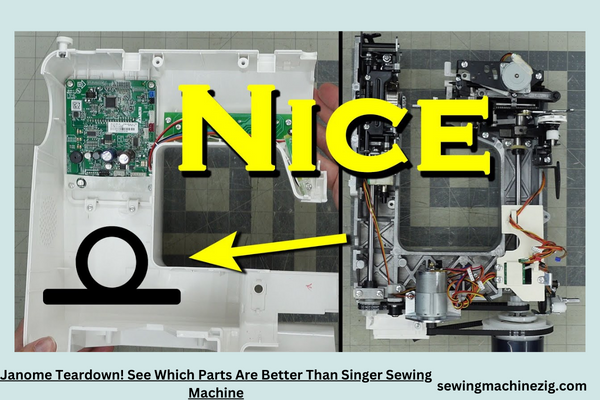
let’s break down the process of taking apart a Janome sewing machine and explore the components, highlighting features that may stand out compared to Singer sewing machines.
Janome Teardown: How To Take Apart a Janome Sewing Machine
- Prepare Your Workspace:
- Start by preparing a clean and well-lit workspace. Gather the necessary tools, including screwdrivers, tweezers, and a container to organize small parts.
- Power Off and Unplug:
- Ensure your safety by turning off the Janome sewing machine and unplugging it from the electrical outlet. This prevents any accidental activation during the teardown process.
- Remove Needle and Presser Foot:
- Begin the teardown by removing the needle and pressing foot. This initial step ensures a safer and more accessible disassembly process.
How To Take Apart a Janome Sewing Machine: Disassembly Steps
- Take Off the Bobbin and Bobbin Case:
- Remove the bobbin and bobbin case. This exposes internal components and facilitates a more thorough examination during disassembly.
- Unscrew the Faceplate:
- Locate and unscrew the faceplate of the Janome sewing machine. This step provides access to inner mechanisms and sets the stage for further disassembly.
- Remove the Accessory Tray:
- If your Janome sewing machine has an accessory tray, unscrew and remove it. Keep track of the screws and small parts associated with the accessory tray.
Janome Teardown: Exploring Components
- Disconnect the Feed Dog:
- Carefully disconnect the feed dog, responsible for moving the fabric through the machine. This step might involve removing screws or levers, depending on your specific Janome model.
- Loosen Screws on the Side and Back Panels:
- Most Janome sewing machines have side and back panels secured with screws. Loosen and remove these screws to access internal components. Keep screws organized in your container.
Janome Teardown: Further Disassembly Steps
- Separate the Top and Bottom Halves:
- With all necessary screws removed, carefully separate the top and bottom halves of the sewing machine. Pay attention to connectors or wires that may still be attached and disconnect them carefully.
- Take Photos for Reference:
- Before proceeding, take clear photos of the internal components. These photos serve as a visual reference during reassembly, helping you recall the original configuration.
Janome Teardown: Additional Disassembly Steps
- Explore and Document Components:
- Disassemble additional components, such as the tension assembly, motor, or electronic parts. Take your time and document each step, noting the condition of the components.
- Store Parts Safely:
- As you disassemble the Janome sewing machine, store all parts, screws, and small components safely and in an organized manner. This prevents loss and confusion during reassembly.
Janome Teardown: Inspection and Comparisons
- Take Note of Quality Differences:
- While disassembling, take note of the quality of the components. Compare these observations with Singer sewing machines to identify any differences in construction or materials.
- Examine Stitch Quality:
- Evaluate the stitch quality and precision of Janome machine components. Note any features that contribute to a consistent and high-quality stitch, potentially distinguishing it from certain Singer models.
- Consider User-Friendly Features:
- Explore any user-friendly features that make Janome machines stand out, such as easy threading systems or advanced stitch options. Compare these features with what you might find in Singer machines.
Janome Teardown: Reassembly and Conclusion
- Reassemble the Machine:
- After inspection or maintenance is complete, reverse the disassembly steps for reassembly. Refer to the photos taken earlier and any notes made during the process to ensure accurate reassembly.
- Test the Machine:
- After reassembly, test the Janome sewing machine to ensure everything is functioning correctly. Pay attention to stitching quality, tension, and overall performance.
By following these steps for taking apart a Janome sewing machine and making comparisons with Singer machines, you can gain insights into the construction and features that may make Janome stand out. Always exercise caution during disassembly and prioritize safety.
How To Use A Hemming Foot On A Sewing Machine
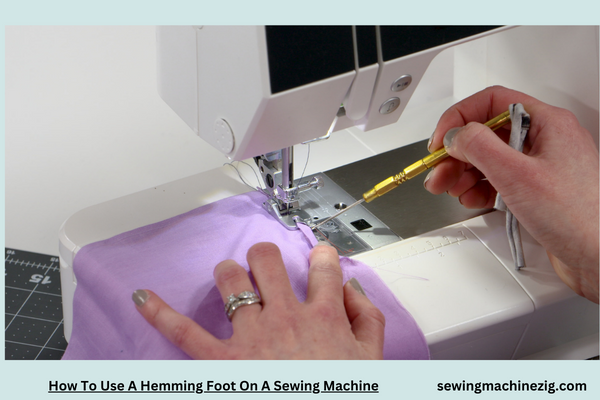
Let’s walk through how to use a hemming foot on a sewing machine in an easy-to-understand manner.
Gather Your Materials:
- Start by gathering the materials you’ll need: your sewing machine, fabric, thread, and, of course, the hemming foot. Ensure that your fabric is prepped and ready for hemming.
Select the Hemming Foot:
- Choose the appropriate hemming foot for your sewing machine. Hemming feet may vary in design, but they typically have a guide or a curl that helps fold and stitch the fabric for a neat hem.
Thread the Machine:
- Thread your sewing machine with the thread color that matches or complements your fabric. Follow your machine’s threading guide for proper threading.
Attach the Hemming Foot:
- Attach the hemming foot to your sewing machine. Most machines have a snap-on system for attaching feet. Lift the presser foot, align the hemming foot, and lower the presser foot lever to secure it in place.
Adjust the Needle Position:
- Depending on your sewing machine, you may need to adjust the needle position to align with the guide on the hemming foot. Refer to your machine’s manual for instructions on adjusting the needle position.
Fold the Fabric:
- Fold the fabric edge to create the desired hem width. The hemming foot will automatically guide the fabric as you sew, ensuring a consistent hem.
Position the Fabric Under the Foot:
- Place the folded fabric under the hemming foot. Ensure that the fold is against the guide or curl of the hemming foot.
Lower the Presser Foot:
- Lower the presser foot onto the fabric. The hemming foot will hold the fold in place as you sew.
Start Sewing:
- Begin sewing at a slow and steady pace. The hemming foot will guide the fabric, creating a neat and uniform hem as you go.
Follow the Guide:
- Keep an eye on the fabric’s alignment with the guide on the hemming foot. This ensures that your hem remains straight and even.
Continue Hemming:
- Continue sewing until you reach the end of the fabric or the desired length of your hem. You can backstitch a few stitches to secure the end.
Cut the Thread:
- Cut the thread and lift the presser foot. Remove the fabric from the machine, and you should have a beautifully hemmed edge.
Press the Hem:
- After sewing, press the hem with an iron to set the stitches and give it a polished look.
Practice on Scrap Fabric:
- If you’re new to using a hemming foot, practice on scrap fabric first to get a feel for how the foot guides the fabric and to adjust to the speed of your sewing machine.
Experiment with Hem Widths:
- Most hemming feet allow you to choose different hem widths. Experiment with adjusting the fold to achieve various hem sizes based on your project.
Using a hemming foot on a sewing machine is a handy skill that can give your projects a professional finish. With a bit of practice, you’ll be able to create neat and precise hems effortlessly.
Conclusion
In conclusion, understanding How to take apart a Janome sewing machine? empowers users with insight into its intricate mechanisms. This knowledge fosters confidence in troubleshooting, maintenance, and potential repairs.
Disassembling a Janome machine offers a deeper understanding of its components, allowing for thorough cleaning and occasional part replacement. Armed with this skill, users can ensure the longevity and optimal performance of their Janome sewing machines, ultimately enhancing their sewing experience and proficiency in handling intricate machine intricacies. “How to take apart a Janome sewing machine?“
FAQS
Q1: Why would I need to take apart my Janome sewing machine?
A1: Taking apart your Janome sewing machine may be necessary for cleaning, routine maintenance, troubleshooting issues, or replacing damaged components.
Q2: Is it safe for me to take apart my Janome sewing machine without professional help?
A2: Yes, it’s generally safe to take apart your Janome sewing machine for basic maintenance and cleaning. Follow your machine’s manual for guidance and exercise caution. “How to take apart a Janome sewing machine?“
Q3: What tools do I need to take apart a Janome sewing machine?
A3: Basic tools such as screwdrivers, brushes, and tweezers may be required. Refer to your machine’s manual for specific tool recommendations. “How to take apart a Janome sewing machine?“
Q4: How often should I take apart my Janome sewing machine for cleaning?
A4: Regular cleaning is essential. Depending on usage, consider cleaning the machine every few weeks to prevent lint buildup and maintain optimal performance.
Q5: Can I take apart my Janome sewing machine to troubleshoot issues like stitching problems?
A5: Yes, taking apart your machine can help troubleshoot stitching issues. Inspect the bobbin area, needle, and feed dogs for any obstructions or damage. “How to take apart a Janome sewing machine?“
Q6: What precautions should I take before disassembling my Janome sewing machine?
A6: Turn off the machine, unplug it, and refer to your manual for specific safety guidelines. Ensure you are comfortable with the process or seek professional assistance. “How to take apart a Janome sewing machine?“

